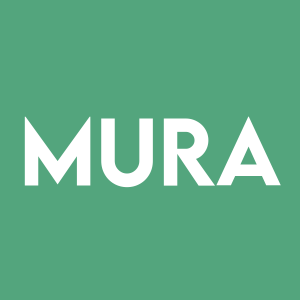Mural Oncology Presents Preclinical Data for IL-18 and IL-12 Programs at the 2024 American Association for Cancer Research Annual Meeting
For the first time, the company shares data for its preclinical IL-18 and IL-12 programs—candidate nominations for each are expected later this year
Combination of IL-18 binding protein resistance with additional half-life enhancement to IL-18 variant demonstrated durable immunological effects in preclinical models
Data presented suggest dual-targeted, subunit approach to engineered IL-12 may mitigate cytokine’s hallmark toxicity without compromising efficacy
WALTHAM, Mass and DUBLIN, Ireland, April 09, 2024 (GLOBE NEWSWIRE) -- Mural Oncology plc (Nasdaq: MURA), a clinical-stage immuno-oncology company developing novel, investigational engineered cytokine therapies designed to address areas of unmet need for patients with a variety of cancers, today shared poster presentations with pre-clinical data from its Interleukin-18 (IL-18) and IL-12 programs at the American Association for Cancer Research (AACR) annual meeting taking place April 5-10 in San Diego, California. This is the first time Mural has shared findings from either program. The details for the presentations are as follows, and both posters are available at https://www.muraloncology.com/publications/.
Interleukin-18 engineered for resistance to IL-18 binding protein (IL-18BP) and half-life extension to enhance its therapeutic potential (Abstract #4076):
- IL-18 is a potent immune-stimulating cytokine, but it is limited by IL-18 binding protein (IL-18BP) – a secreted high affinity decoy receptor that binds with, and neutralizes, IL-18, thus limiting its efficacy over time.
- Mural’s protein engineering approach is twofold: first, it introduces mutations to IL-18 that are designed to minimally impact the structure while eliminating binding to IL-18BP. Secondly, it fuses IL-18 to protein scaffolds to extend the half-life and increase the cytokine’s exposure.
- The company believes the half-life enhancement may lead to a more durable immunological effect, as demonstrated by the interferon gamma and Th1 response, proinflammatory reactions necessary for the body’s immune response.
- Notably, the duration of Th1 response observed was significantly longer (approximately 7-9 days) than a “naked” approach without this half-life extension, which is generally cleared in 2-3 days.
- The optimal balance of potency and pharmacokinetic enhancement is still being determined to nominate a lead IL-18 development candidate.
“Resistance to IL-18BP is the foundation of our approach. The mutations we introduced prevented the binding protein from neutralizing the cytokine’s efficacy. We show that resistance to IL-18BP combined with the drug’s extended half-life leads to a durable immunological effect in preclinical models. Our observation of increases in Th1 cytokines, which have been shown elsewhere to correlate with response to checkpoint inhibitors, are encouraging indications that our engineered IL-18 may provide a therapeutic complement to checkpoint inhibitor immunotherapy1,2,” said Mark Whitmore, Ph.D., Principal Scientist of Cancer Biology, and the poster’s lead author.
Generation of tumor targeted self-assembling split IL-12 subunits for the treatment of cancer (Abstract #4066):
- IL-12p70 is a potent stimulator of the immune system with profound anti-tumor activity but very poor tolerability.
- Mural’s protein engineering approach aims to mitigate IL-12's hallmark toxicity by splitting the heterodimer into two inactive monomers: IL-12p35 and IL-12p40. These individual subunits are separately fused to two non-competitive antibody fragments.
- The goal of this is to assemble active IL-12p70 preferentially in the tumor microenvironment. The sequential administration of these targeted subunits concentrates the IL-12p70 activity primarily at the tumor site, thereby limiting systemic formation and associated toxicities.
- In vivo analysis demonstrated that targeting both subunits resulted in the greatest accumulation and retention of IL-12p70 complex in the tumor.
“We believe that by self-assembling the split IL-12 subunits within the tumor microenvironments, we can circumvent native IL-12’s severe toxicities without compromising its efficacy. The data presented today provide strong rationale for our strategy of non-competitively targeting each subunit to a unique epitope on the same molecule,” said Joshua Heiber, Ph.D., Director of Research & Development, Cancer Biology, and the poster’s lead author.
About Mural Oncology
Mural Oncology is leveraging its novel protein engineering platform to develop cytokine-based immunotherapies for the treatment of cancer. By combining our expertise in cytokine biology and immune cell modulation and our protein engineering platform, we are developing medicines to deliver meaningful and clinical benefits to people living with cancer. Our mission is to broaden the potential and reach of cytokine-based immunotherapies to improve the lives of patients. Our lead candidate, nemvaleukin alfa (nemvaleukin), is currently in potentially registrational trials in mucosal melanoma and platinum-resistant ovarian cancer, and we expect to nominate IL-18 and IL-12 candidates later this year. Mural Oncology has its registered office in Dublin, Ireland, and its primary facilities in Waltham, Mass. For more information, visit Mural Oncology’s website at www.muraloncology.com and follow us on LinkedIn and X.
Forward-Looking Statements
Statements contained in this press release regarding matters that are not historical facts are “forward-looking statements” within the meaning of the Private Securities Litigation Reform Act of 1995. Because such statements are subject to risks and uncertainties, actual results may differ materially from those expressed or implied by such forward-looking statements. Such statements include, but are not limited to, statements regarding: the Company’s pipeline and development programs, including the expected timing of candidate selection, preclinical data, the potential of the Company’s programs to address unmet medical needs, and the continued progress of its pipeline and programs. Any forward-looking statements in this statement are based on the Company’s current expectations of future events and are subject to a number of risks and uncertainties that could cause actual results to differ materially and adversely from those set forth in or implied by such forward-looking statements. Risks that contribute to the uncertain nature of the forward-looking statements include, among others, the inherent risks and uncertainties associated with competitive developments, preclinical development, clinical trials, product development activities and regulatory approval requirements; that preclinical results, including the data from preclinical studies of the Company’s IL-18 and IL-12 programs referred to in this release, may not be predictive of results of future clinical studies or real-world results; and those other risks and uncertainties set forth in the Company’s filings with the Securities and Exchange Commission (“SEC”), including its Annual Report on Form 10-K for the fiscal year ended December 31, 2023 and in subsequent filings the Company may make with the SEC. All forward-looking statements contained in this press release speak only as of the date on which they were made. The Company undertakes no obligation to update such statements to reflect events that occur or circumstances that exist after the date on which they were made.
1 Ayers et al. (2017) Journal of Clinical Investigation 127(8): 2930-2940.
2 Karachaliou et al. (2018) Therapeutic Advances in Medical Oncology 10: 1-23.
Contacts
Investors:
David Borah, CFA
david.borah@muraloncology.com
Media:
Katie Sullivan
katie.sullivan@muraloncology.com









